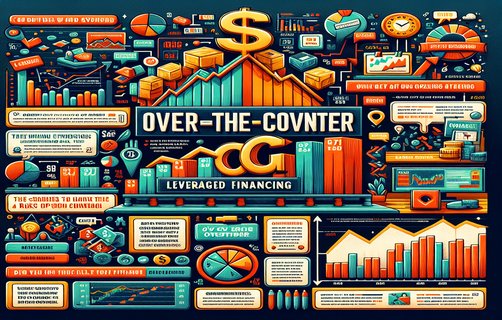
Beyond the mundane rhythms of ordinary discourse, this article plunges into the exhilarating interplay among speed, win probability, strategic split, reliable variance, max bonus payout, and dynamic return. Imagine a world where every decision is a calculated gamble and every second counts—this isn’t mere fantasy but an emerging reality in today’s industry landscape.
At its essence, understanding prizes isn’t simply about the dazzling rewards that await winners; rather, it is an intricate web of statistics and strategy that can transform every business decision into a potential masterpiece of innovation. Successful companies are learning to harness speed not only as a metric of efficiency but as an instrument of competitive advantage. In an increasingly fast-paced market, being nimble and swift often outweighs the old adage of ‘slow and steady wins the race.’
Dive deeper into the concept of win probability, a cornerstone of risk management in modern enterprise. This factor isn’t solely reserved for lottery-style games or sports but is woven into product launches, marketing strategies, and even customer engagement models. For leaders aiming to pioneer industry transformations, understanding the subtle dynamics between win probability and risk can lead to more informed strategic splits. By allocating resources based on computed probabilities, organizations can optimize their investments and inflate their max bonus payout possibilities.
Speaking of strategic split, the art of dividing resources and efforts is more than a mere percentage breakdown. It’s a tactical decision, one that leverages reliable variance—the statistical measure that ensures teams can gauge the dispersion of potential outcomes—to balance innovation with risk. When companies adopt a model that deploys reliable variance analysis, they not only minimize unexpected setbacks but also recalibrate strategies in real-time. This approach fosters an environment where each idea is tested with measured speed and accuracy, simultaneously mitigating risks and amplifying rewards.
Next, we turn our attention to the concept of dynamic return. In a volatile market, the ability to adjust and optimize returns dynamically is paramount. The principle of dynamic return challenges traditional static models, urging industry leaders to embrace flexibility in return strategies. By tweaking variables such as win probability and max bonus payout on the fly, businesses can adapt to changes, harnessing real-time data to drive innovation. The lesson here is clear: continuous recalibration based on dynamic return metrics enables a proactive rather than reactive stance in business strategy.
So, what actionable steps can you take to infuse your organization with these innovative approaches? First, invest in advanced analytics that track and interpret key performance indicators. Utilize sophisticated tools to measure speed, win probability, and reliable variance so that your strategies are data-driven. Second, consider a phased implementation of a dynamic return model. Start with pilot projects where strategic splits and controlled adjustments are made based on initial feedback and performance output. Always remember: the goal is not to eliminate risk entirely but to manage it intelligently by transforming uncertainty into an asset.
Another critical aspect is fostering a culture of agility. Encourage teams to experiment with variable strategies, gain insights from small-scale trials, and iteratively refine their processes. Empower managers with data insights at every turn, ensuring that each decision contributes to a holistic view of your organization’s performance. In this era where prizes do not solely equate to monetary gain, but to long-term strategic advantage, flexibility and responsiveness have become the key differentiators.
Furthermore, leaders must shift their focus from static targets to dynamic feedback loops. By incorporating continuous improvement mechanisms, you not only improve the speed of execution but also ensure that the win probability steadily climbs as your organization learns from each iteration of its strategic split.
Interactive Questions for Readers:
1. How do you envision the role of dynamic return in your current business model?
2. Which do you consider more critical: speed in execution or accuracy in win probability calculations?
3. What practical changes can you implement to transition from a static to a dynamic strategic split?
4. In your opinion, how can reliable variance analysis reshape risk management in your industry?

FAQs:
Q1: What exactly is meant by a dynamic return model?
A1: A dynamic return model refers to a flexible strategy where returns on investments are optimized continuously using real-time data feedback, allowing businesses to adjust quickly to market changes.
Q2: How does reliable variance contribute to strategic decision-making?

A2: Reliable variance provides insights into the spread of potential outcomes, enabling managers to make informed risk assessments and allocate resources more efficiently during strategic splits.
Q3: What are some first steps in integrating these innovative strategies into a traditional business model?
A3: Begin with investing in data analytics tools that monitor key metrics such as speed, win probability, and variance, followed by launching pilot projects to test the dynamic return concept on a smaller scale before full integration.


Comments
SkyWalker
This article brilliantly redefines the role of dynamic strategies in modern business models. The emphasis on agile risk management was eye-opening!
明月
非常实用的建议,讲解策略调整和风险统计的部分非常有启发性,让我对未来投资方向有了新的思考。
TechGuru
I appreciated the actionable steps provided, especially the idea of starting with pilot projects to test dynamic return models. Great blend of theory and practice!
小红
文中提到的战略分割和速度的重要性真的启示了我,很希望看到更多这样的创新讨论。